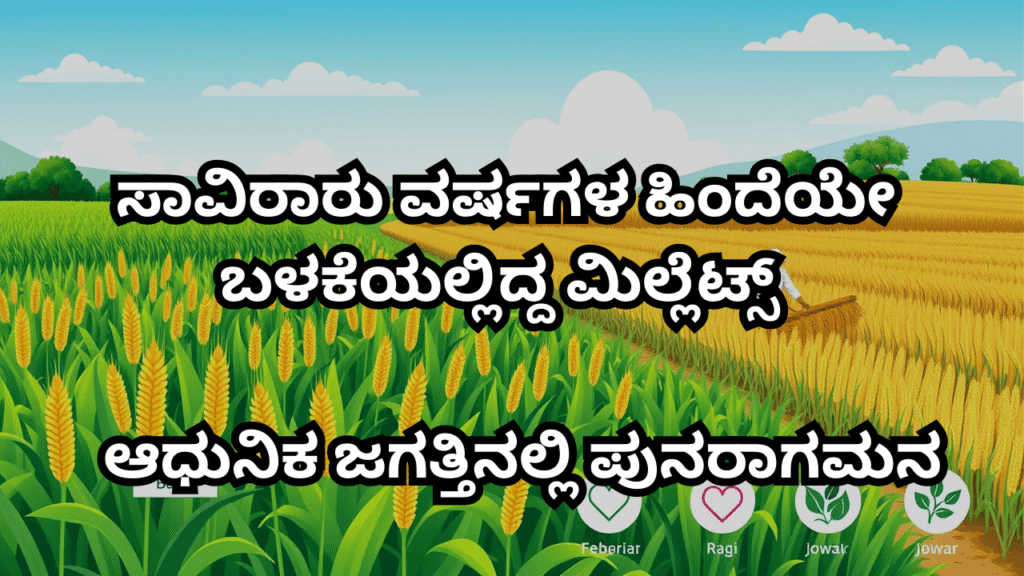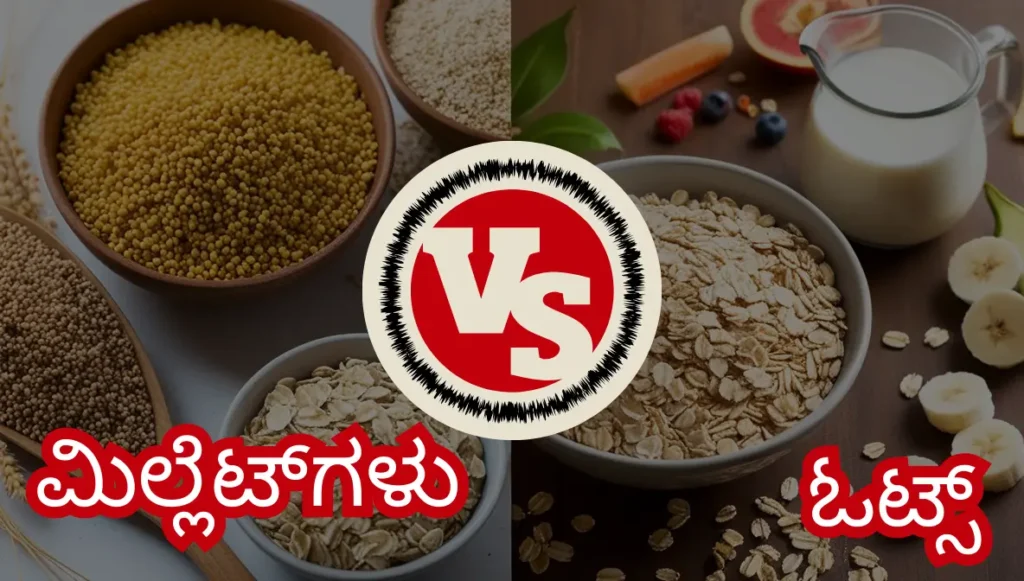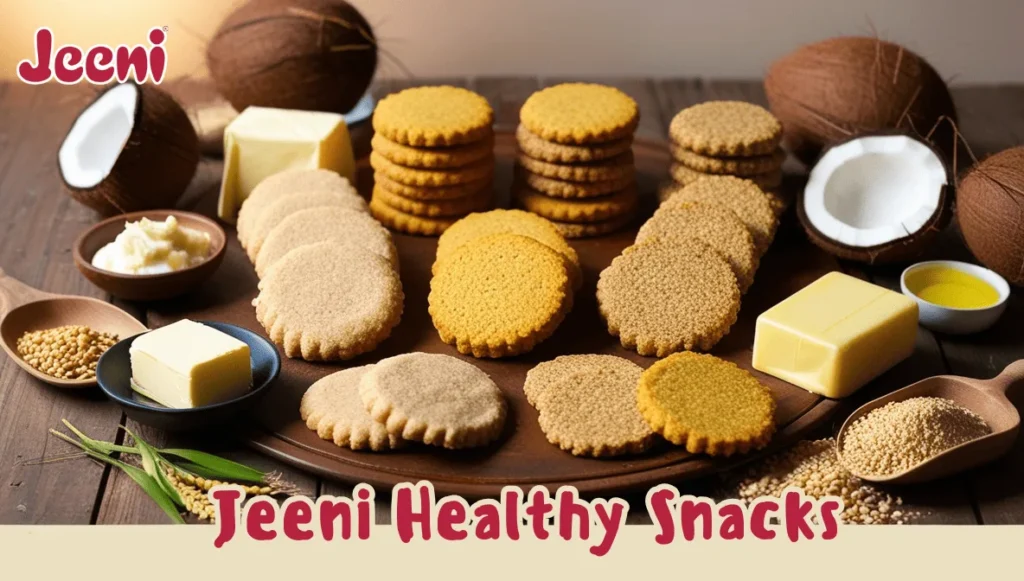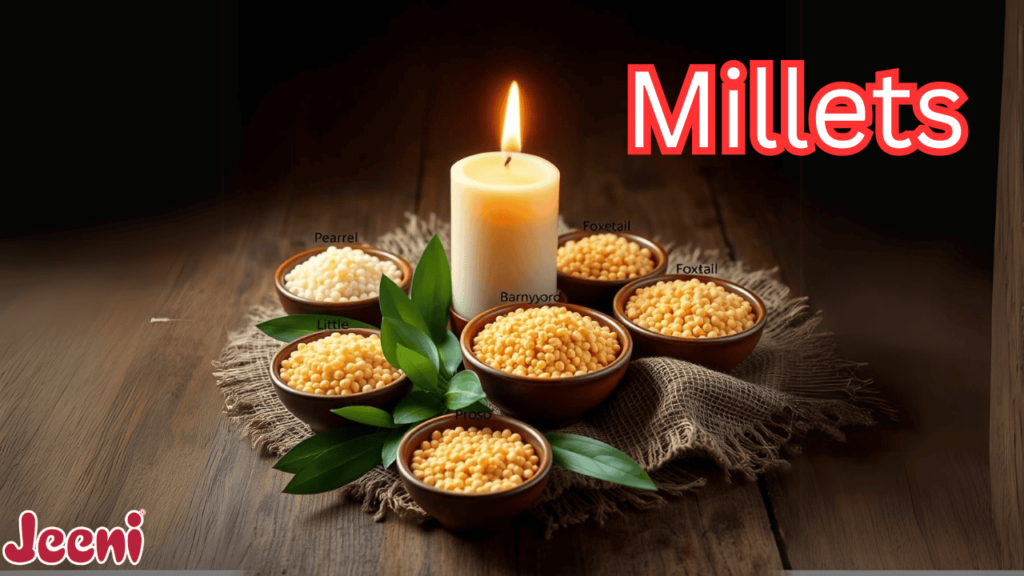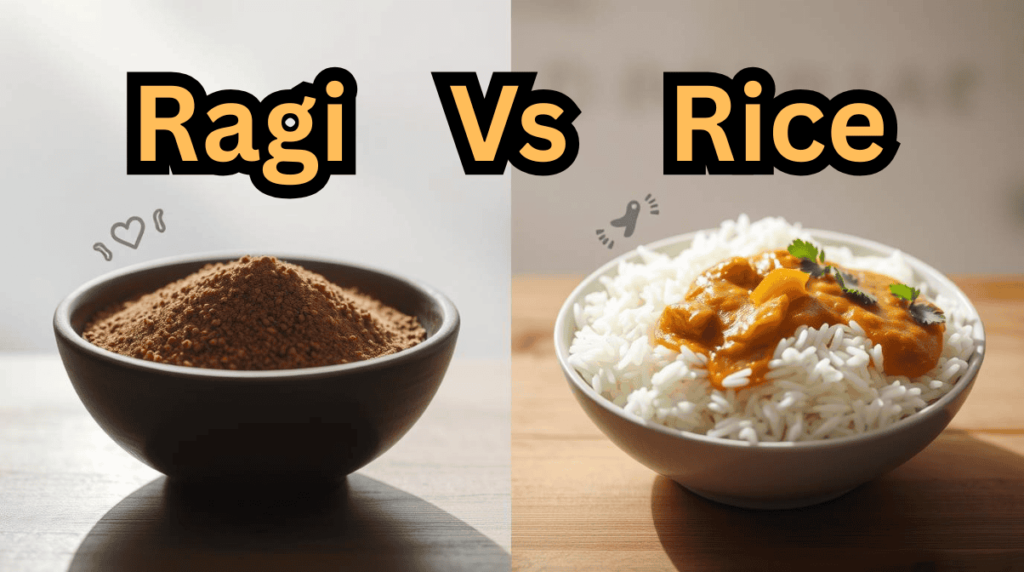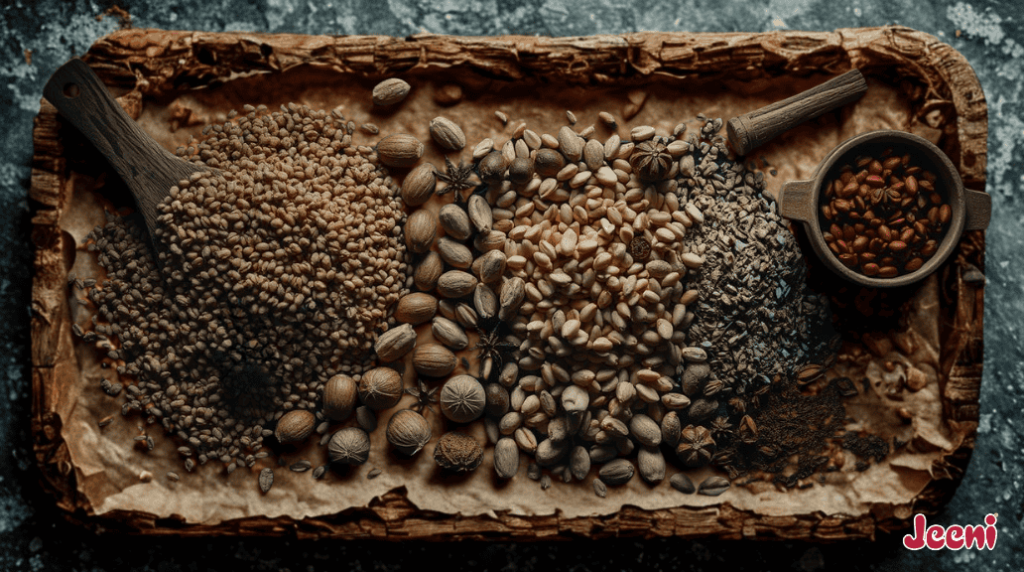Millets vs Oats – A Comprehensive Nutritional Comparison
Millets vs Oats: In recent years, health-conscious individuals have been turning to ancient grains like millets and oats for their nutritional benefits. Both millets and oats are gluten-free, rich in fiber, and packed with essential nutrients. But how do they stack up against each other? In this blog post, we’ll dive deep into the nutritional value of millets and oats, compare their health benefits, and help you decide which one is better suited for your dietary needs.
Nutritional Value Table: Millets vs Oats
| Nutrient (per 100g) | Millets | Oats |
|---|---|---|
| Calories | 378 kcal | 389 kcal |
| Protein | 11 g | 16.9 g |
| Carbohydrates | 73 g | 66 g |
| Dietary Fiber | 8.5 g | 10.6 g |
| Fat | 4.2 g | 6.9 g |
| Iron | 3.9 mg | 4.7 mg |
| Calcium | 8 mg | 54 mg |
| Magnesium | 114 mg | 177 mg |
| Potassium | 195 mg | 429 mg |
| Vitamin B6 | 0.38 mg | 0.12 mg |
| Glycemic Index (GI) | Low (50-60) | Medium (55-65) |
Millets vs Oats: Health Benefits of Millets
- Rich in Antioxidants: Millets are packed with antioxidants like quercetin and curcumin, which help combat oxidative stress and inflammation.
- Gluten-Free: Ideal for those with celiac disease or gluten intolerance.
- Supports Digestive Health: High fiber content aids digestion and prevents constipation.
- Low Glycemic Index: Helps regulate blood sugar levels, making it suitable for diabetics.
- Rich in Magnesium: Promotes heart health and reduces the risk of type 2 diabetes.
Millets vs Oats: Health Benefits of Oats
- High in Soluble Fiber: Oats contain beta-glucan, which helps lower cholesterol and improve heart health.
- Weight Management: Keeps you full for longer, aiding in weight loss.
- Rich in Protein: A great plant-based protein source for vegetarians and vegans.
- Boosts Immunity: Contains zinc and selenium, which strengthen the immune system.
- Improves Skin Health: Oats are often used in skincare products for their soothing properties.
Millets vs Oats: Which is Better?
The choice between millets and oats depends on your dietary goals:
- For Weight Loss: Oats are slightly better due to their higher fiber and protein content, which keeps you satiated.
- For Diabetics: Millets have a lower glycemic index, making them a better option for blood sugar control.
- For Muscle Building: Oats are richer in protein, making them ideal for muscle repair and growth.
- For Gluten-Free Diets: Both are excellent, but millets offer more variety (e.g., foxtail, pearl, finger millet).
How to Incorporate Millets and Oats into Your Diet
- Millets: Use them in porridge, upma, khichdi, or as a rice substitute.
- Oats: Enjoy them as oatmeal, overnight oats, or add them to smoothies and baked goods.
1. Are millets and oats gluten-free?
Yes, both millets and oats are naturally gluten-free. However, oats can sometimes be contaminated with gluten during processing, so if you have celiac disease or severe gluten intolerance, look for certified gluten-free oats.
2. Which is better for weight loss: millets or oats?
Oats are often considered better for weight loss due to their higher fiber and protein content, which helps keep you full for longer. However, millets are also a great low-calorie option with a low glycemic index, making them suitable for weight management.
3. Can diabetics eat millets and oats?
Yes, both millets and oats are good for diabetics. Millets have a lower glycemic index, which helps regulate blood sugar levels more effectively. Oats, on the other hand, contain beta-glucan, a type of soluble fiber that helps control blood sugar spikes.
4. Which grain is richer in protein: millets or oats?
Oats are richer in protein compared to millets. For example, 100g of oats contains about 16.9g of protein, while millets contain around 11g of protein per 100g.
5. How do millets and oats compare in terms of fiber content?
Oats have a slightly higher fiber content (10.6g per 100g) compared to millets (8.5g per 100g). Both are excellent sources of dietary fiber, which aids digestion and promotes gut health.
6. Can I eat millets and oats every day?
Yes, both millets and oats can be consumed daily as part of a balanced diet. They are nutrient-dense and provide essential vitamins, minerals, and fiber. However, variety is key to ensuring you get a wide range of nutrients.
7. Which is better for heart health: millets or oats?
Both grains are beneficial for heart health. Oats are particularly known for their beta-glucan content, which helps lower cholesterol levels. Millets, on the other hand, are rich in magnesium, which supports heart health by regulating blood pressure.
8. Are millets and oats suitable for a vegan or vegetarian diet?
Absolutely! Both millets and oats are plant-based and provide essential nutrients like protein, iron, and magnesium, making them excellent choices for vegans and vegetarians.
9. How can I cook millets and oats?
-> Millets: Can be cooked like rice, used in porridge, or added to soups and salads. Popular dishes include millet khichdi, upma, and millet-based baked goods.
->Oats: Commonly used in oatmeal, overnight oats, smoothies, and baked goods like cookies and bread.
10. Which grain is more environmentally sustainable?
Millets are often considered more sustainable because they require less water and are more resilient to harsh growing conditions compared to oats. They are also known as “climate-smart” crops.
Conclusion
Both millets and oats are nutritional powerhouses, each with its unique benefits. While oats are a great choice for weight management and heart health, millets excel in blood sugar regulation and gluten-free diets. Incorporating both into your diet can provide a balanced mix of nutrients and health benefits.



